Slugs can be a gardener’s worst nightmare! These slimy pests love to feast on tender leaves, flowers, and even fruits, leaving behind ragged holes and a trail of destruction. If left unchecked, they can quickly damage your plants and ruin all your hard work.
Fortunately, there are multiple ways to get rid of slugs in the garden, from natural deterrents to chemical solutions. Whether you prefer eco-friendly methods like barriers and companion planting or need a stronger approach with slug pellets, there’s a solution for every gardener.
In this blog, we’ll explore 10 easy and effective ways to keep your garden slug-free and protect your plants all season long!
1. Handpicking at Night
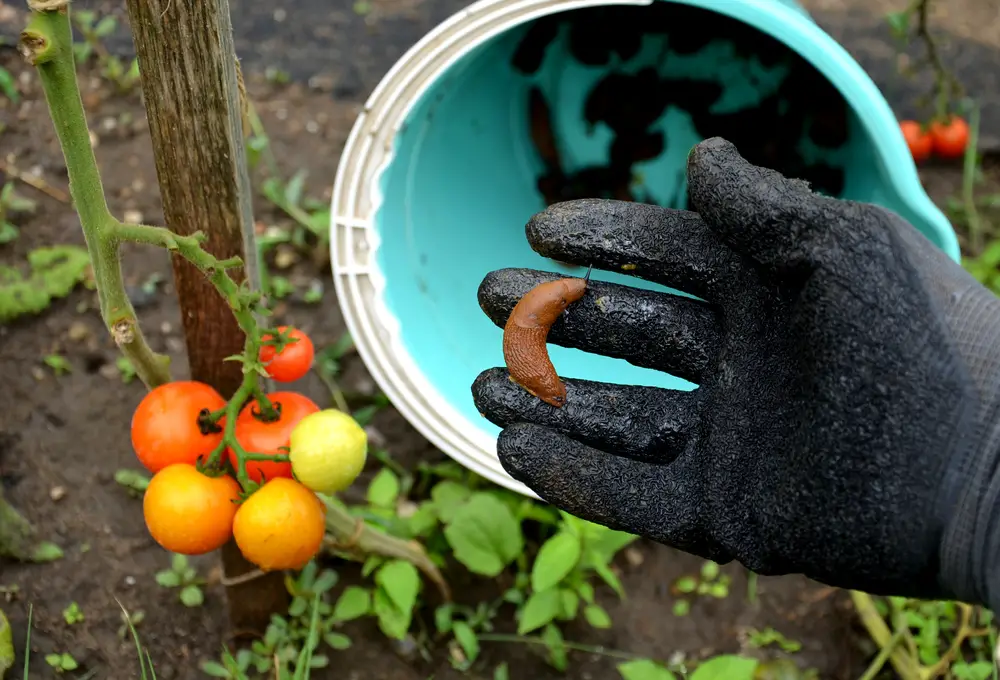
One of the simplest and most effective ways to get rid of slugs in the garden is by manually removing them. Since slugs are most active at night and during the early morning, this is the best time to catch them in action.
Wear gloves or use tongs to pick them off plants, soil, and moist areas where they hide. To prevent them from returning, drop the slugs into a bucket of soapy water, which quickly eliminates them. Regular handpicking, especially after rain, can significantly reduce their population and protect your plants from further damage.
2. Use Beer Traps

A simple and effective way to get rid of slugs in the garden is by setting up beer traps. Slugs are naturally attracted to the smell of beer, and once they crawl in, they drown.
To make a DIY beer trap, take a shallow dish or container and bury it slightly into the soil, ensuring the rim is at ground level. Fill it with beer, preferably stale or cheap beer, as the yeast lures slugs in. Check and empty the trap regularly, refilling it as needed. Placing multiple traps around your garden can help reduce the slug population significantly.
3. Diatomaceous Earth
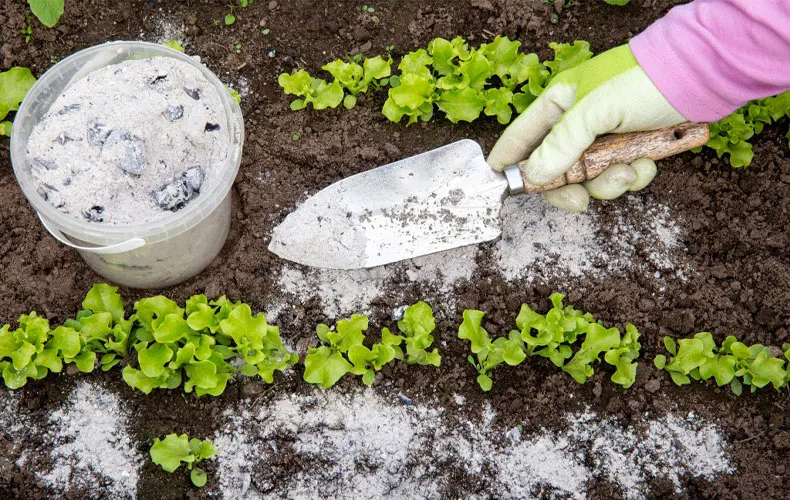
Diatomaceous earth is a natural and effective way to get rid of slugs in the garden by dehydrating them. This fine, powdery substance is made from fossilized algae and has sharp microscopic edges that damage the slugs’ soft bodies, causing them to lose moisture and die.
To use diatomaceous earth, sprinkle a thin layer around the base of your plants, creating a protective barrier. Focus on areas where slugs are most active, such as moist soil and shaded spots. Since it loses effectiveness when wet, be sure to reapply after rain or heavy watering.
Using food-grade diatomaceous earth ensures safety for pets and beneficial insects while keeping slugs away from your garden.
Related Topics:
4. Eggshell or Coffee Grounds Barrier
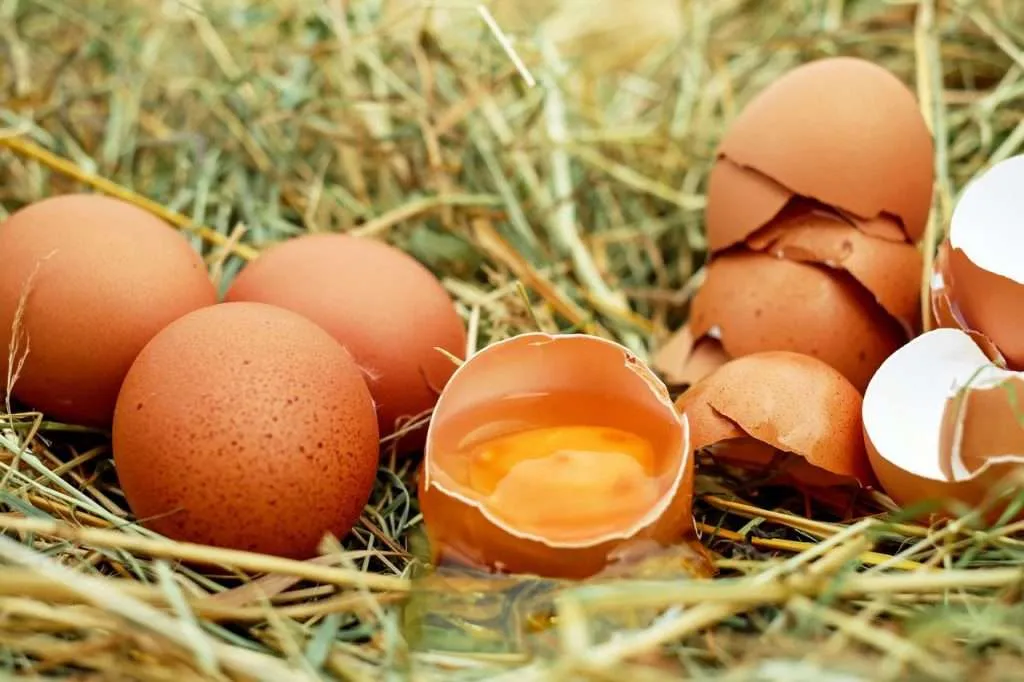
Creating a barrier with crushed eggshells or coffee grounds is a simple and natural way to get rid of slugs in the garden without using chemicals.
Crushed eggshells have sharp, jagged edges that slugs dislike crawling over, making them an effective deterrent. Simply scatter them around the base of your plants to create a protective ring.
Coffee grounds, on the other hand, contain caffeine, which is toxic to slugs and acts as a natural repellent. Sprinkling used coffee grounds around plants not only keeps slugs away but also enriches the soil with nutrients. For best results, refresh these barriers regularly, especially after rain or watering.
5. Copper Tape or Wire
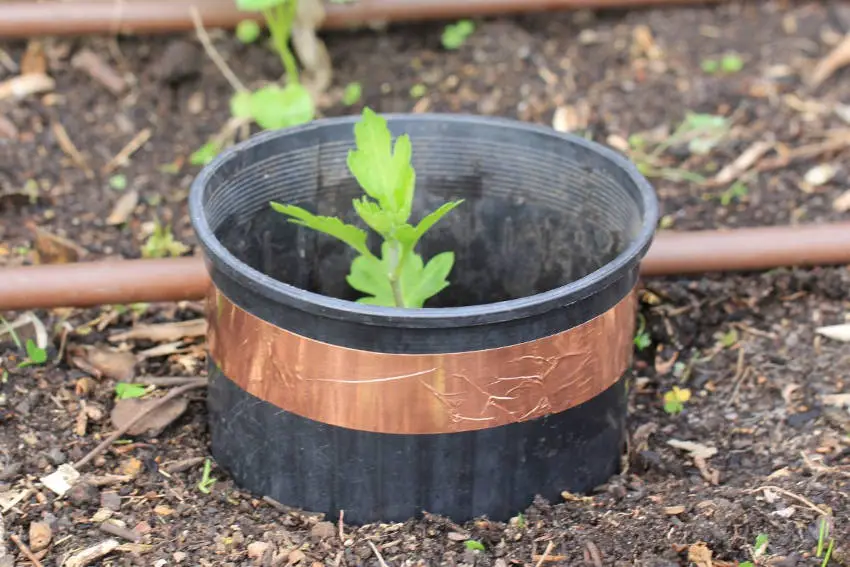
Using copper tape or wire is an effective way to get rid of slugs in the garden by creating a natural barrier they won’t cross. When slugs come into contact with copper, it reacts with their slime, giving them a mild electric shock that repels them.
To use copper as a deterrent, apply copper tape around the rims of pots, raised garden beds, or even individual plant stems. For larger areas, you can place copper wire around garden borders to keep slugs out. Make sure the copper surface stays clean for maximum effectiveness, and replace tape if it starts to wear out over time.
6. Encourage Natural Predators
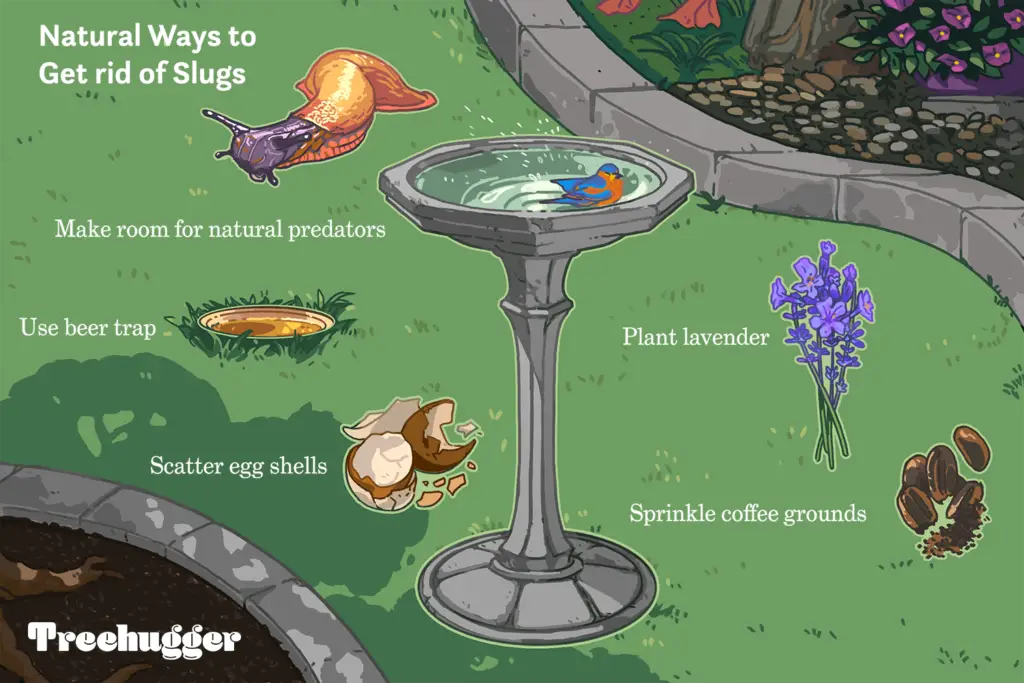
One of the best long-term ways to get rid of slugs in the garden is by attracting their natural predators. Birds, frogs, toads, hedgehogs, and ground beetles all feed on slugs, helping to keep their population in check.
To attract birds, set up bird feeders, birdbaths, or nesting boxes. For frogs and toads, create a small pond or leave damp, shady areas where they can hide. Hedgehogs can be encouraged by providing shelter spots like log piles or dense shrubs.
Ground beetles thrive in mulch and leaf litter, so avoid excessive cleaning of garden beds. By creating a wildlife-friendly environment, you’ll naturally reduce slug numbers while promoting a balanced ecosystem.
7. Use Slug-Resistant Plants
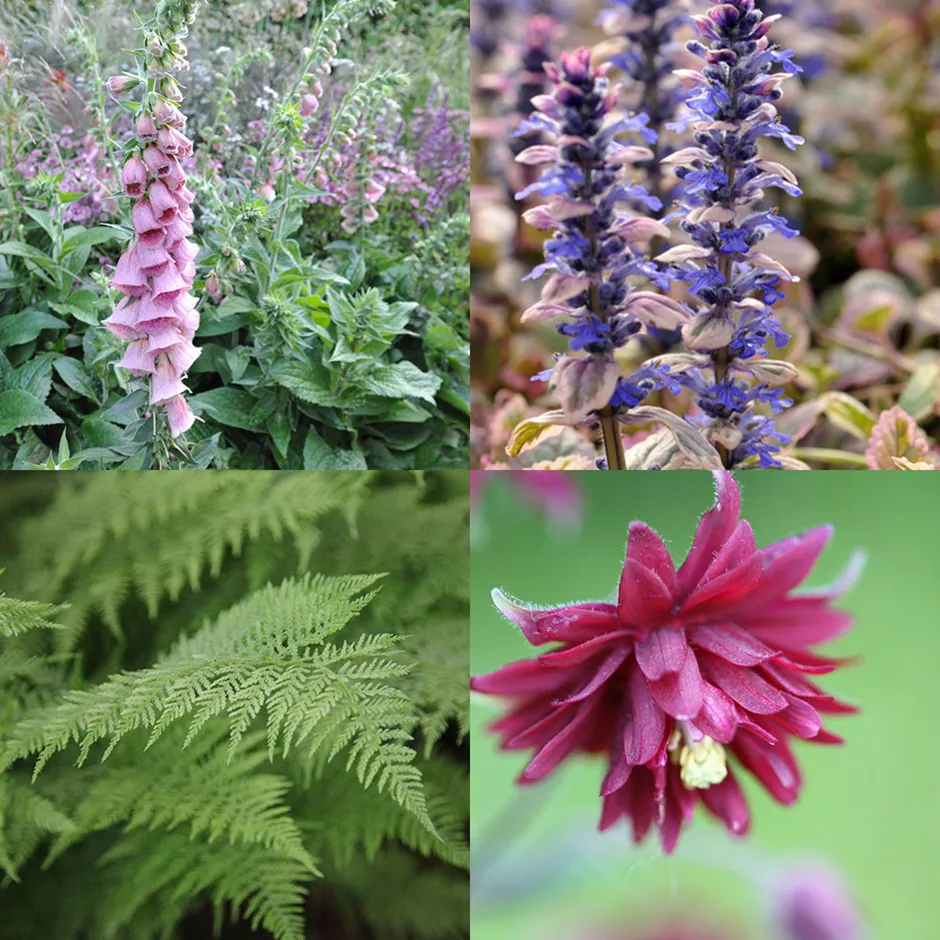
Planting slug-resistant varieties is a smart and natural way to get rid of slugs in the garden without constant intervention. Slugs tend to avoid plants with strong scents, tough leaves, or hairy textures.
Some great slug-resistant plants include lavender, rosemary, ferns, sage, foxglove, and ornamental grasses. These plants not only deter slugs but also add beauty and variety to your garden.
Strategic planting can help protect more vulnerable plants. For example, surrounding tender seedlings with slug-resistant plants can create a natural barrier. Incorporating these plants into your landscape reduces slug damage and promotes a healthier, low-maintenance garden.
8. Homemade Slug Repellent Sprays
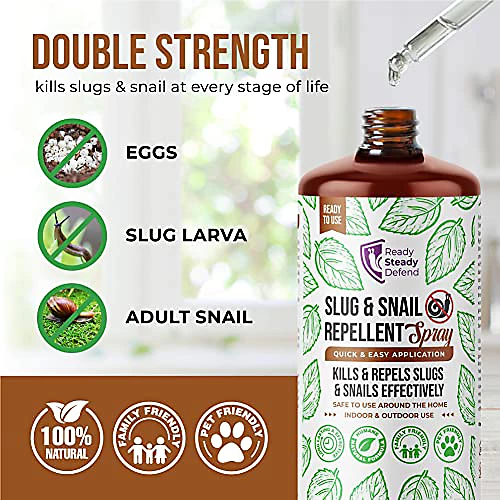
Using DIY sprays is a simple and effective way to get rid of slugs in the garden without relying on harsh chemicals. Natural repellents like garlic and vinegar can help deter slugs from feeding on your plants.
- Garlic Water Spray: Blend 2-3 garlic cloves with a quart of water, strain, and mix with a few drops of dish soap. Spray this solution around plants and soil to create a barrier that slugs dislike.
- Vinegar Solution: Mix equal parts vinegar and water and spray directly on slugs to kill them instantly. However, be cautious—vinegar is acidic and can harm plants, so apply it carefully on slugs only.
Regularly applying these sprays, especially after rain, can help keep slugs at bay while protecting your garden naturally.
9. Create Dry, Gritty Barriers

Using rough, dry materials is an effective way to get rid of slugs in the garden by making it difficult for them to move. Slugs prefer moist, smooth surfaces, so gritty textures like sand, gravel, and sawdust deter them by irritating their soft bodies.
To use this method, sprinkle a layer of sharp sand, crushed gravel, or dry sawdust around the base of plants or along garden beds. This creates a physical barrier that slugs are reluctant to cross. For best results, keep these barriers dry and refresh them regularly, especially after rain or heavy watering.
10. Organic or Chemical Slug Pellets
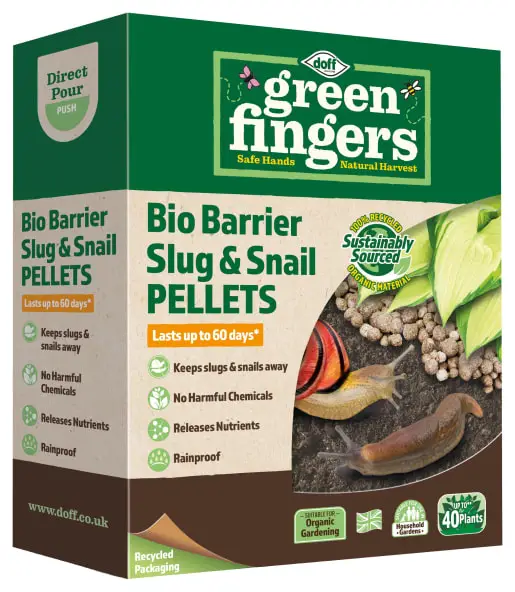
When other methods aren’t enough, slug pellets can be an effective way to get rid of slugs in the garden. There are two main types: organic (iron phosphate) pellets and chemical (metaldehyde) pellets.
- Iron Phosphate Pellets: These are considered safer for pets, wildlife, and the environment. They work by disrupting the slug’s digestion, causing them to stop feeding and die.
- Metaldehyde Pellets: While highly effective, these can be toxic to pets, birds, and beneficial insects. Many countries are now restricting or banning their use due to environmental concerns.
If using slug pellets, always follow the instructions carefully and apply them sparingly around plants. Opting for organic options helps control slugs while keeping your garden safe for pollinators and wildlife.
Slugs can be a persistent problem, but with the right approach, you can get rid of slugs in the garden and protect your plants. From simple handpicking and natural barriers like eggshells and coffee grounds to effective solutions like beer traps and slug-resistant plants, there are plenty of ways to keep these pests under control.
For the best results, consider combining multiple methods—such as attracting natural predators while using dry, gritty barriers and organic repellents. Whenever possible, opt for eco-friendly solutions to maintain a healthy and balanced garden ecosystem.
By taking proactive steps, you can enjoy a lush, slug-free garden and keep your plants thriving all season long!
FAQs:
1. What is the most effective way to get rid of slugs in the garden?
The best approach is to use a combination of methods, such as handpicking at night, setting up beer traps, and creating barriers with diatomaceous earth or copper tape. Encouraging natural predators like birds and frogs can also help reduce the slug population over time.
2. Are there natural ways to get rid of slugs in the garden without using chemicals?
Yes! You can use crushed eggshells, coffee grounds, or sand as physical barriers. Homemade garlic or vinegar sprays can also repel slugs. Additionally, planting slug-resistant plants like lavender, rosemary, and ferns helps keep slugs away naturally.
3. How can I prevent slugs from coming back after I get rid of slugs in the garden?
To prevent slugs from returning, maintain a dry environment by reducing excess moisture and removing hiding spots like damp leaves and mulch buildup. Regularly reapply barriers, use organic slug repellents, and introduce natural predators to keep your garden slug-free in the long run.
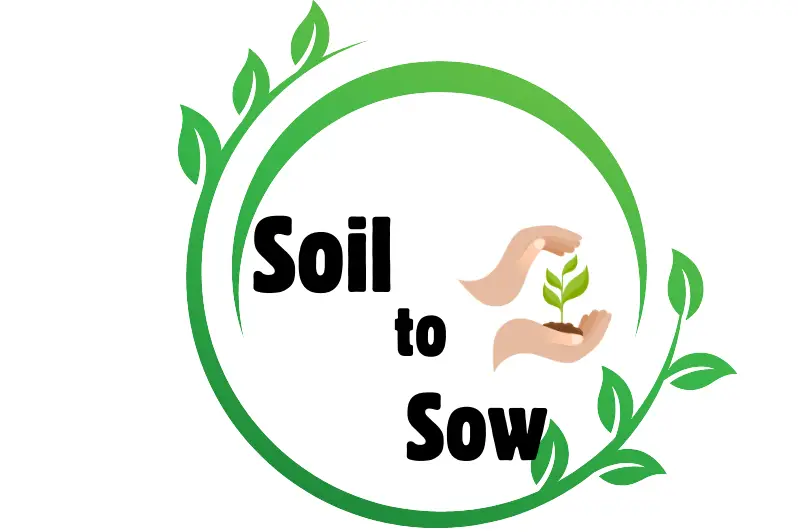
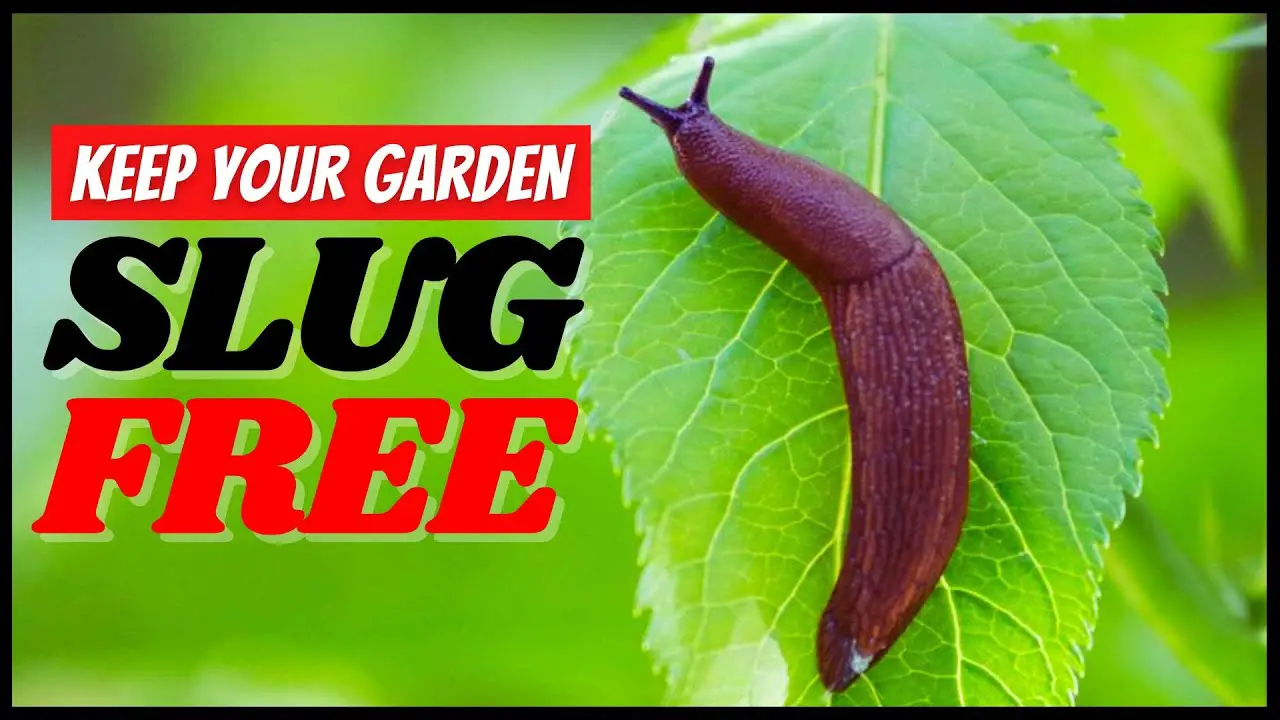
2 thoughts on “How To Get Rid Of Slugs In The Garden 10 Easy Ways: Foolproof Methods!”